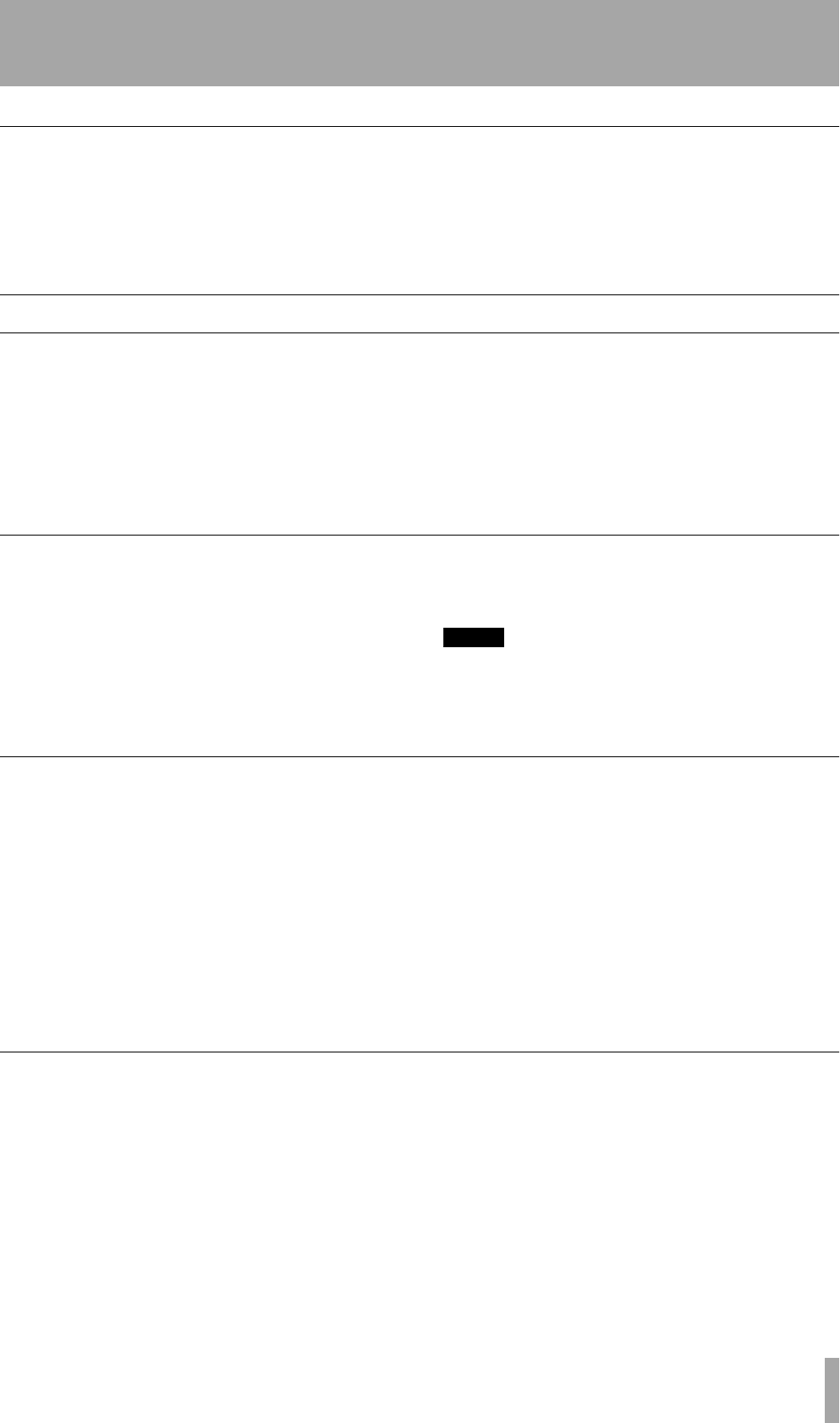
1 – Introductory concepts–SCSI issues
TASCAM 788 Digital PortaStudio 17
MIDI remote control
In addition to the transport control described above,
the 788 is able to accept MIDI Program Change mes-
sages to change mixer scenes, and routing tables, etc.
as well as previously-set effector settings.
It can also accept Control Change messages, which
allow a sequencer, for example, to control mixer
parameters as well as individual effector parameters,
so that remote control of the sound can be carried out
in real time for the final mix.
SCSI issues
SCSI (usually pronounced “scuzzy”) stands for
Small Computer Systems Interface, and is a way of
connecting computers and peripheral devices (e.g.
hard disks, removable disk drives, scanners, tape
drives, etc.).
The 788 uses SCSI to communicate with its hard
disk, since SCSI is a reliable, efficient way of send-
ing data between devices.
You can connect different types of SCSI device to the
788, for example external hard disks, magneto-opti-
cal disks or other types of removable media, as well
as SCSI-equipped CD-R and CD-RW drives.
SCSI connections
The 788 uses the SCSI-2 protocol, which is used by
most modern hard disk drives, and storage devices.
You can connect almost any SCSI storage device to
the 788, and use it for data storage.
Any CD-R or CD-RW drive that you use with the
788 must be a SCSI drive. Contact your TASCAM
dealer or consult the TASCAM Web site for details
of which drives are known to work well with the 788.
NOTE
You should never plug or unplug SCSI devices from the
chain with the power to any of them switched on. If you do,
there is a real risk that you will damage the devices beyond
repair.
SCSI IDs
SCSI devices are connected together in a “daisy-
chain” arrangement. The total length of the chain
should be less than 3 m (about 10 ft.).
Within each chain, each device must have its own
unique identifier, known as a “SCSI ID”.
There may be up to eight devices within a SCSI
chain, including the main SCSI controller (the 788 is
a SCSI controller). Numbering of devices typically
starts at 0 (zero) and goes up to 7.
The internal disk in the 788 has SCSI ID 0, and the
788 itself has SCSI ID 7.
Make sure that every device in your SCSI chain,
including the controller (788) has a different ID. If
you create a SCSI chain with more than one device
using the same ID, you will find that you have prob-
lems with the setup.
Consult the documentation for your other devices to
find out how to set the ID (it may be a set of switches
or a rotary switch).
SCSI termination
At each end of a SCSI chain, there must be a termina-
tor. This may either be a separate plug, or may be
built into the SCSI device.
Consult the documentation for your other devices to
find out how to set the termination for them.
The 788 is always at the end of its SCSI chain, and is
always terminated.


















